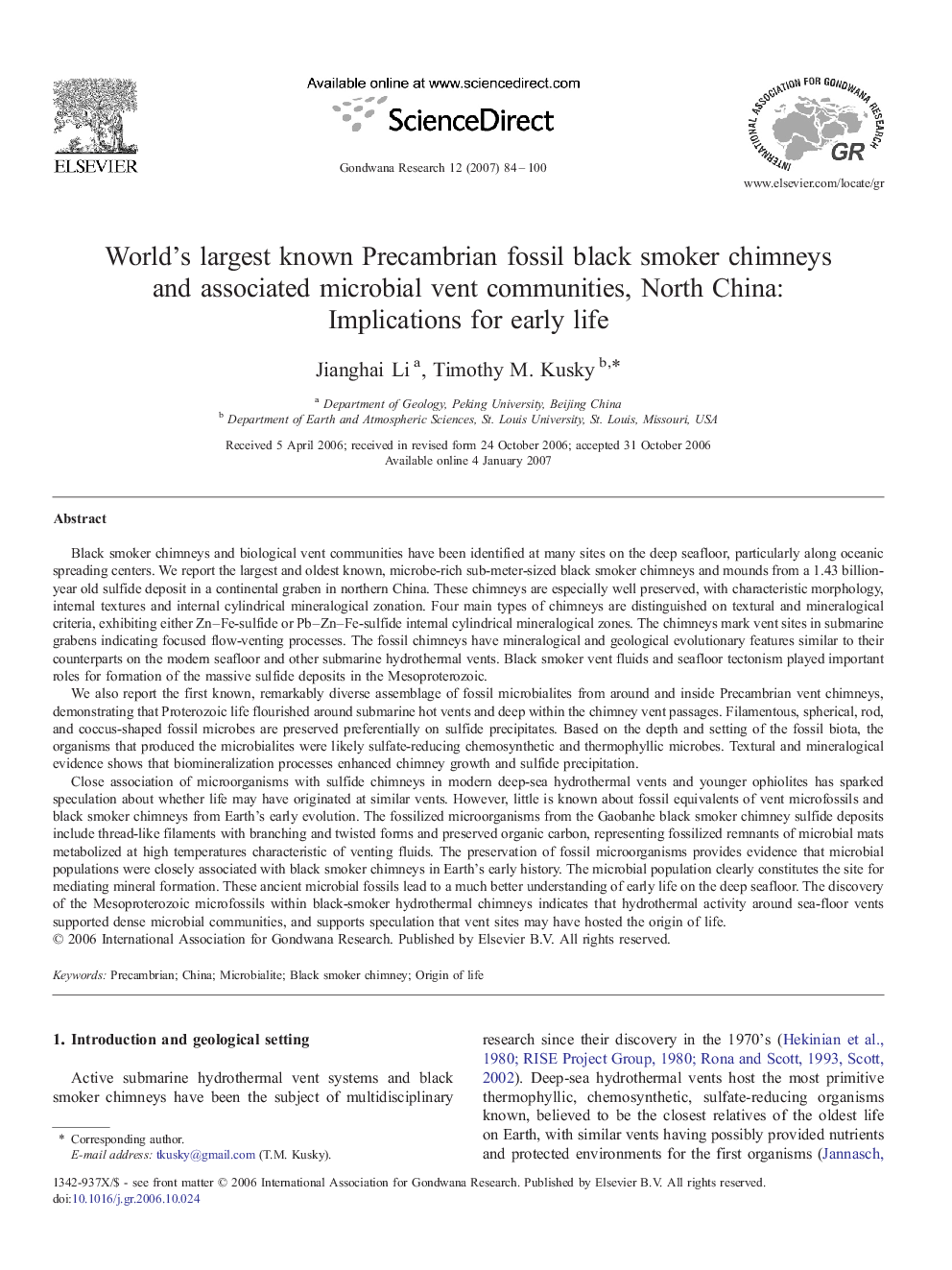| کد مقاله | کد نشریه | سال انتشار | مقاله انگلیسی | نسخه تمام متن |
|---|---|---|---|---|
| 4727983 | 1640153 | 2007 | 17 صفحه PDF | دانلود رایگان |

Black smoker chimneys and biological vent communities have been identified at many sites on the deep seafloor, particularly along oceanic spreading centers. We report the largest and oldest known, microbe-rich sub-meter-sized black smoker chimneys and mounds from a 1.43 billion-year old sulfide deposit in a continental graben in northern China. These chimneys are especially well preserved, with characteristic morphology, internal textures and internal cylindrical mineralogical zonation. Four main types of chimneys are distinguished on textural and mineralogical criteria, exhibiting either Zn–Fe-sulfide or Pb–Zn–Fe-sulfide internal cylindrical mineralogical zones. The chimneys mark vent sites in submarine grabens indicating focused flow-venting processes. The fossil chimneys have mineralogical and geological evolutionary features similar to their counterparts on the modern seafloor and other submarine hydrothermal vents. Black smoker vent fluids and seafloor tectonism played important roles for formation of the massive sulfide deposits in the Mesoproterozoic.We also report the first known, remarkably diverse assemblage of fossil microbialites from around and inside Precambrian vent chimneys, demonstrating that Proterozoic life flourished around submarine hot vents and deep within the chimney vent passages. Filamentous, spherical, rod, and coccus-shaped fossil microbes are preserved preferentially on sulfide precipitates. Based on the depth and setting of the fossil biota, the organisms that produced the microbialites were likely sulfate-reducing chemosynthetic and thermophyllic microbes. Textural and mineralogical evidence shows that biomineralization processes enhanced chimney growth and sulfide precipitation.Close association of microorganisms with sulfide chimneys in modern deep-sea hydrothermal vents and younger ophiolites has sparked speculation about whether life may have originated at similar vents. However, little is known about fossil equivalents of vent microfossils and black smoker chimneys from Earth's early evolution. The fossilized microorganisms from the Gaobanhe black smoker chimney sulfide deposits include thread-like filaments with branching and twisted forms and preserved organic carbon, representing fossilized remnants of microbial mats metabolized at high temperatures characteristic of venting fluids. The preservation of fossil microorganisms provides evidence that microbial populations were closely associated with black smoker chimneys in Earth's early history. The microbial population clearly constitutes the site for mediating mineral formation. These ancient microbial fossils lead to a much better understanding of early life on the deep seafloor. The discovery of the Mesoproterozoic microfossils within black-smoker hydrothermal chimneys indicates that hydrothermal activity around sea-floor vents supported dense microbial communities, and supports speculation that vent sites may have hosted the origin of life.
Journal: Gondwana Research - Volume 12, Issues 1–2, August 2007, Pages 84–100